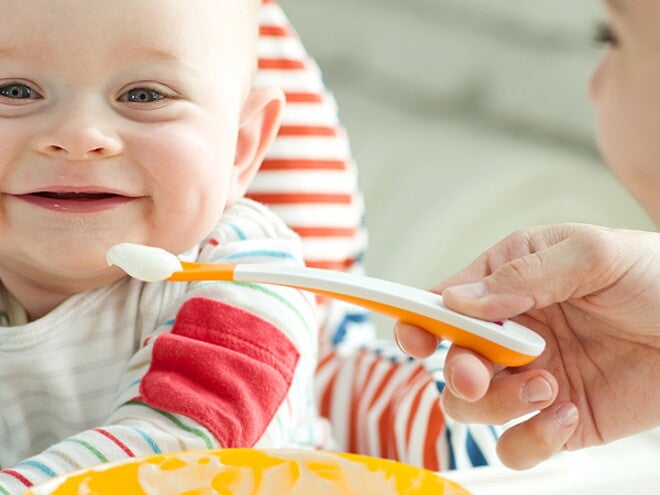
Weaning
THE WEANING GUIDE: INTRODUCING SOLIDS
The weaning guide: introducing solids
Breastfeeding plays a significant role in building a bond between mother and baby. Breastmilk is more than just food to your baby, but a source of comfort, reassurance and closeness as the baby experiences life outside the womb. From six months to about three years of life, your baby will go through a period of rapid growth and development. As your baby undergoes these changes, his nutritional needs change.
Normal growth
In the first year, your baby will grow faster than at any other time in his life. By the end of his first year, he should have tripled in weight, grown 22–24cm in length and increased to approximately a 55 cm head circumference to accommodate his growing brain. To achieve all this, your baby needs adequate nutrition.
Growth chart
Monitoring your baby’s growth is critical. A growth chart is a simple yet accurate measure to see if your baby is getting the right foods for growth. Always ask your healthcare worker to plot your baby’s height and weight on a growth chart. Keep this chart in a safe place and take it with you to the clinic or healthcare provider whenever you have to go for normal visits or when your baby is not well.
WHAT IS WEANING?
At some point, milk alone won’t be enough to satisfy your baby’s developing needs, and this is when weaning comes in. Weaning is when your baby is slowly introduced to solid foods and starts to move towards a balanced diet of various foods in addition to breastmilk. Weaning doesn’t necessarily signal the end of the intimate bond you and your child created through nursing. It only means you’re nourishing and nurturing him in different ways like reading a book, singing a song together or playing outside instead. If your child protests, try to stay calm and be firm.
